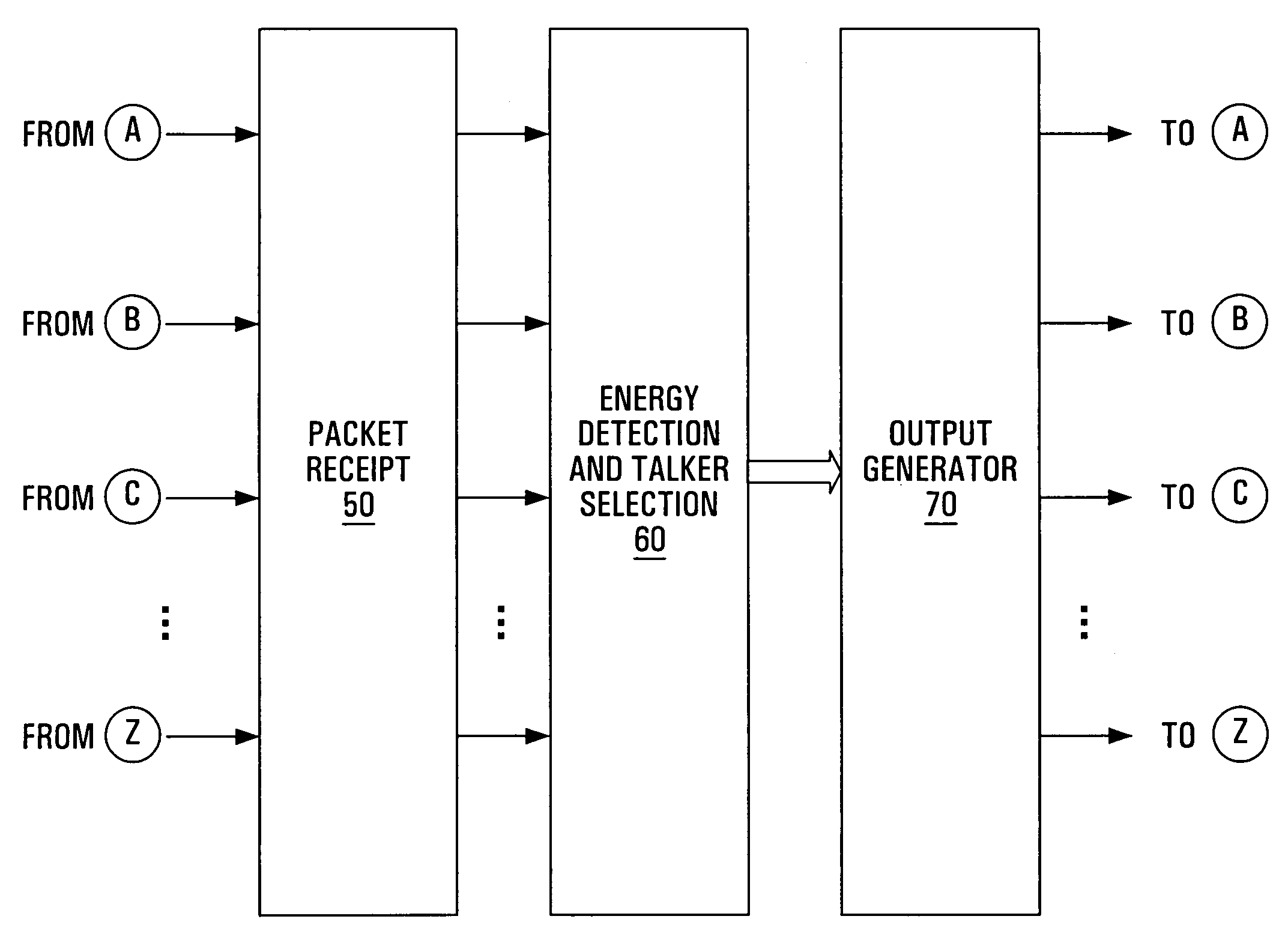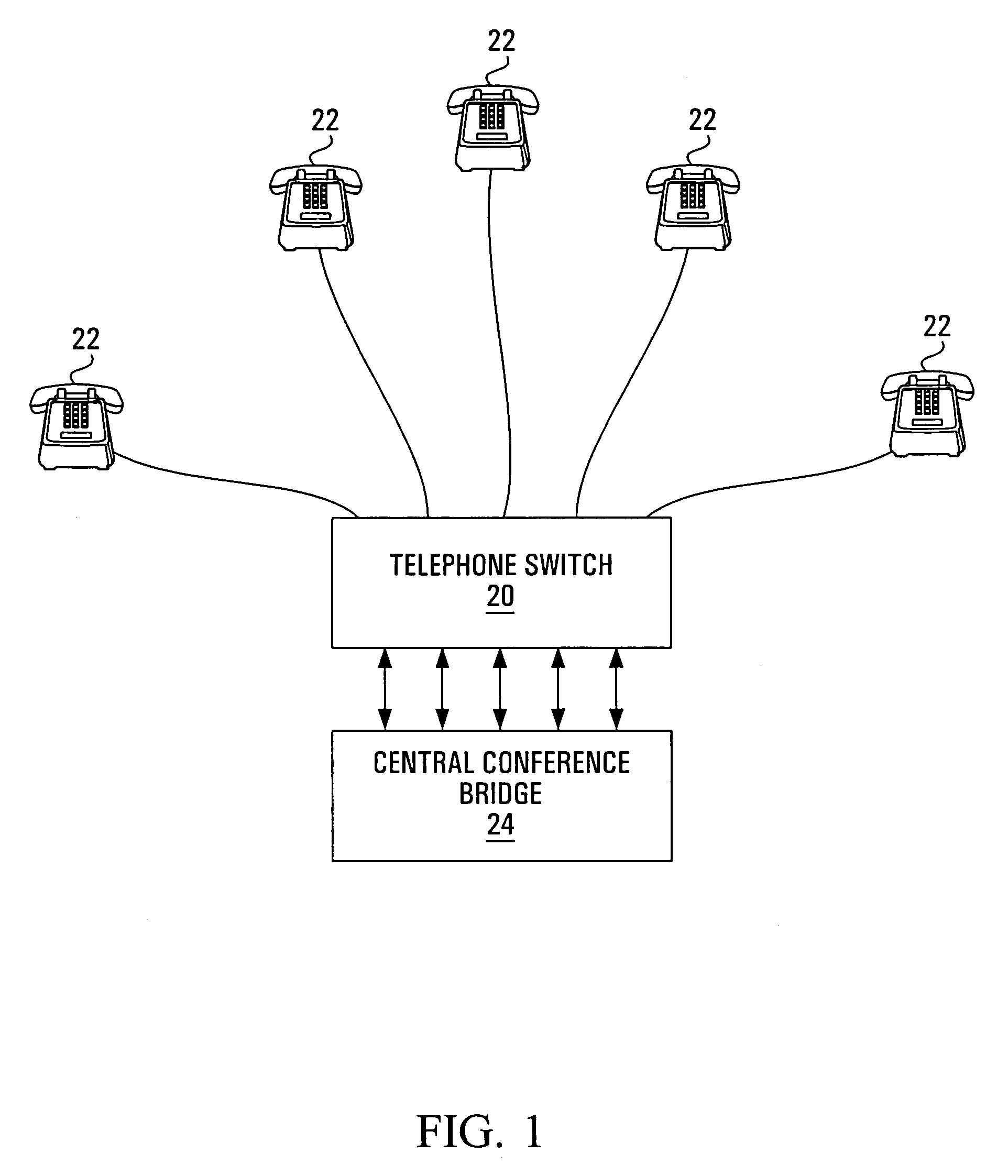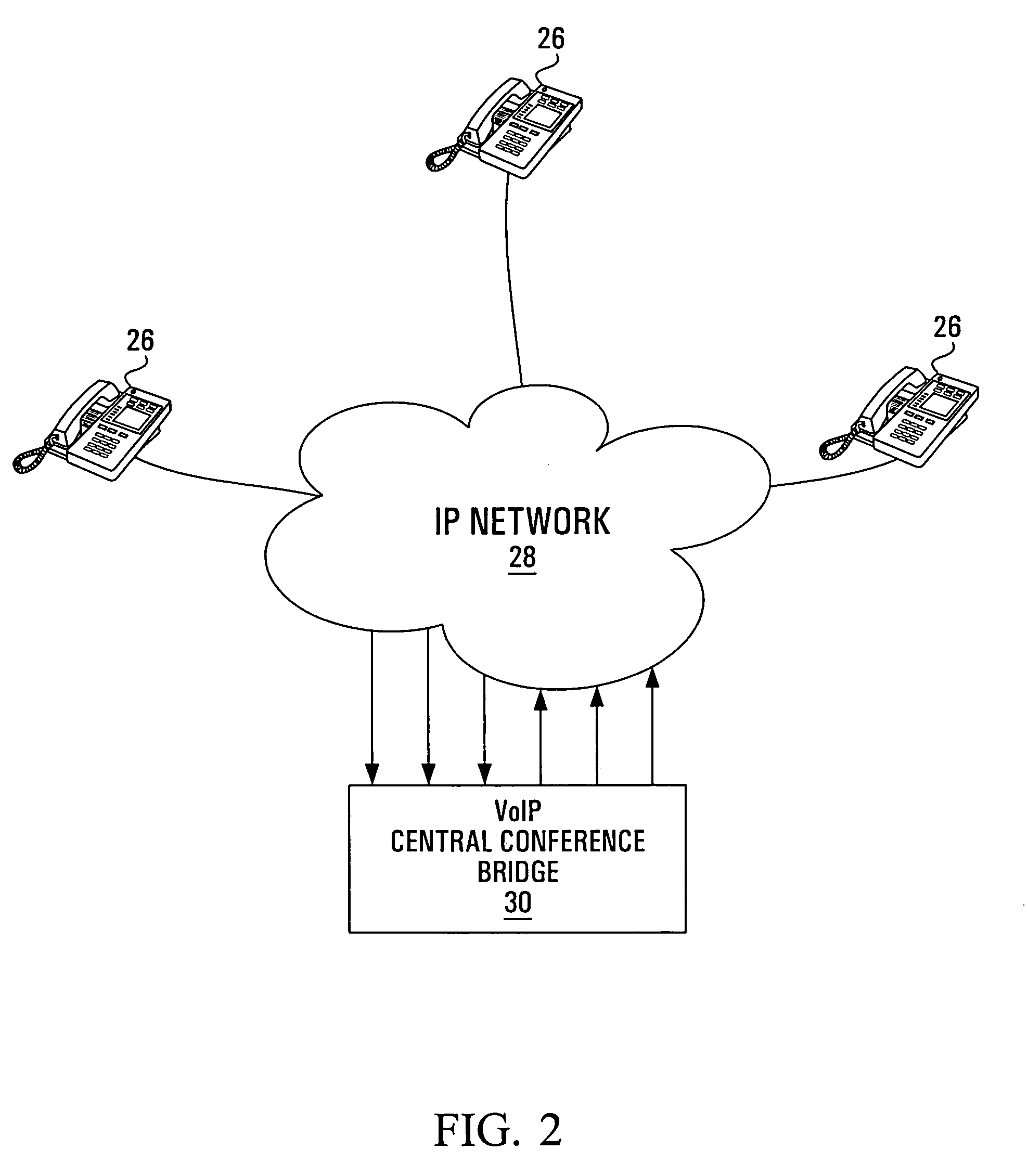Apparatus and method for packet-based media communications
- Summary
- Abstract
- Description
- Claims
- Application Information
AI Technical Summary
Benefits of technology
Problems solved by technology
Method used
Image
Examples
Embodiment Construction
[0034]The present invention is directed to a number of different methods and apparatuses that can be utilized within a packet-based voice communication system. Primarily, the embodiments of the present invention are directed to methods and apparatus used for voice conferences within packet-based communication networks, but this is not meant to limit the scope of the present invention.
[0035]One skilled in the art would understand that there are two essential sectors for the operations of a telephone session. These sectors include a control plane that performs administrative functions such as access approval and build-up / tear-down of telephone sessions and / or conference sessions and a media plane which performs the signal processing required on media (voice or video) streams such as format conversions and mixing operations. As described below, the present invention is applicable to modifications within the media plane which could be implemented with a variety of different control plan...
PUM
 Login to View More
Login to View More Abstract
Description
Claims
Application Information
 Login to View More
Login to View More - R&D
- Intellectual Property
- Life Sciences
- Materials
- Tech Scout
- Unparalleled Data Quality
- Higher Quality Content
- 60% Fewer Hallucinations
Browse by: Latest US Patents, China's latest patents, Technical Efficacy Thesaurus, Application Domain, Technology Topic, Popular Technical Reports.
© 2025 PatSnap. All rights reserved.Legal|Privacy policy|Modern Slavery Act Transparency Statement|Sitemap|About US| Contact US: help@patsnap.com



